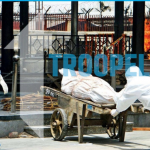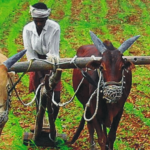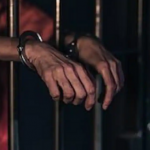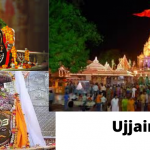Oct 3, 2020 | Uncategorized
Due to the corona pandemic, the conditions of the cemeteries and the graveyards are worsening day by day. Therefore, the country’s emerging online news cum views platform, Troopel.com has taken an initiative to change and improve the dire situation of the cemeteries. The channel is continuously running online polls, which is getting a lot of support from the public. In the past few months, we have heard many cases where a lot of negligence has been done by the officials towards the corpses. Somewhere a 15-day-old corpse has been given to the family, while in many cases; the funeral was done without informing the family.
The figures recorded in the administration and the cemeteries also vary from each other. More than 200 cremations have been performed in Indore in the past 20 days, but the administration has a record of only 100 people. Large amounts are paid for the corpses of corona-infected patients to be transported to the cemeteries. Ambulance drivers responsible for carrying the dead body are demanding 8 to 10 thousand rupees for transporting the corpse to the crematorium and performing the last rites. Furthermore, ambulances are transporting five to six bodies all at once. Highlighting these conditions, the channel’s co-founder Atul Malikram says that, “due to Corona, the condition of all the cemeteries of the country is getting worse day by day. They are not being taken care of by the administration and the general public. It is very disheartening to see that people are making a business of this epidemic. Thus, the channel is continuously working to raise awareness about the subject.”
Troopel.com focuses primarily on politics and social issues. The channel is committed to bringing the truth of the news to its viewers. Apart from making the administration aware of the deteriorating conditions of the crematoriums and cemeteries, Troopel.com is also working for other social issues like keeping the sanctity of religious places, equal rights for the nomadic society, etc.
Sep 29, 2020 | Uncategorized
“India’s agricultural growth rate used to be 3.7 percent during 2013-14, but at present, the country’s agricultural growth rate has reached 0.2 percent. At the same time, it was reported in the Economic Survey 2014 that in 2014, the rural wage growth had come down to 3.6 percent, which was 20 percent in 2011. ”
The intention behind showing these statistics is to make people aware of the conditions of the farmers are worsening and to bring out the real picture of the agriculture sector at present.
Let’s talk about this decade between 2010- 2019, about what were the needs of India as an agrarian country and why rural India is important for the economy?
In 2010, the global economic recession that started in the year 2008 became a big challenge for the country. But due to the continuous demand for consumption goods, the impact of this recession was negligible. Manmohan Singh’s government still receive praises for their efforts in rescuing India in its dark days of the financial crisis.
But especially during this time, rural India did not allow any reduction in their expenses and despite being completely dependent on agriculture, they continued to buy the things they needed, showing how important rural India is for the country’s economy.
But in the middle of this decade, we saw how the country started going through a severe agrarian crisis, which increased the economic pressure on about 44 crore people in the agricultural sector.
Now, the question here is who should be responsible for this? Monsoon or the Government? Let’s have a look.
According to data taken from some authentic news sources
On June 2, 2015, Union Minister of Science and Technology and Earth Sciences Harsh Vardhan said, “Let’s Pray to God that the revised forecast doesn’t true,” as the India Meteorological Department further downgraded the monsoon rain forecast on 2 June in the wake of strengthening El Nino conditions over the Pacific Ocean. Monsoon disappointed the farmers again in 2015, due to which the crops were damaged in many parts of the country for the sixth time.
For the last three years, the summer monsoon had been weak. There was also unseasonal rain and hail in winter, due to which the agricultural growth rate was estimated to be near zero. If this pattern remains, then the country may have to go through the worst drought in the current history.
What is the role of the government?
There is a growing fear of scarcity of food grains and increasing expanse of food items in the country. And, this will have the biggest impact on farmers. Due to the decrease in agricultural productivity, there is a rapid growth of the financial crisis. The agricultural economy is now mainly made up of debt. This will affect 60 percent of the country’s population, which is dependent on agriculture and directly affects the national economy.
Too much or too little rainfall has resulted in continuous crop loss, which has brought the agricultural growth rate to 0.2 percent, which used to be 3.7 percent in 2013-14. According to NSSO (National Sample Survey Office) released in February (2015), agricultural credit increased by 24 percent during 2003-13. During this period, agriculture gross the domestic product i.e. GDP increased by only 13 percent. According to the experts, this is very concerning as it indicates that other growth factors like production and consumption are either stagnant or decreasing but agricultural GDP is rising due to ‘credit growth’.
What was the situation of farmers in this decade?
In the year 2010, 54 people in Andhra Pradesh committed suicide simply because they were facing pressure for recovery of the loan amount by microfinance companies. These microfinance companies follow no laws and are simply meant to recover their money at high-interest rates. On the other hand, the average earning of a farmer‘s family was Rs 214 while the expenditure was Rs 207 per month between 2004 and 2014. That is, a farmer’s family had 7 rupees 13 paise a day while spending 6 rupees 90 paise in it.
We will be talking about the economic condition of the farmers and the reasons behind their suicide in our next video.
For other interesting news related to the farmers, keep reading troopel.com
Sep 25, 2020 | Uncategorized
It is said that, of all the things you choose in life, you don’t get to choose what your nightmares are! The same can be said for the prisoners who were sentenced to the cellular jail of Andaman and Nicobar. The punishment of being a prisoner in this jail or Kalapani ki saza as it was called, was a nightmare come to life. People who know about this prison still get goosebumps while thinking about it. Let’s have a look at why it is called the cruelest punishment.
Kalapani punishment was started by the British in India in the Cellular Jail located in the Port Blair City of Andaman. One look at this prison will tell you how difficult it would have been to live in it, and Indian freedom fighters were especially kept in these jails.
Notably, the prisoners here were kept in total isolation with no contact with each other. The prison had a separate cell for every prisoner. The loneliness was the most frightening punishment for the prisoners sentenced here. A total of 698 cells were built in seven branches and there was no bedroom in any of them. Each closet was 15 × 8 feet. The prisoner of one cell could not contact the prisoner of the other cell in any way.
The construction of the jail was started in 1896 and completed in 1906. The boundary walls of this prison were so small that one can easily cross it. But with deep seawater framing all the sides, the prisoners had no way of escape.
The Britishers used to keep most of India’s freedom fighters in Kalapani. Vinayak Damodar Savarkar, Bhai Parmanand, Maulana Fazl-e-Haq Khairabadi, Maulana Ahmadullah, Movli Abdul Rahim Sadiqpuri, Yogendra Shukla, Batukeshwar Dutt, Babarao Savarkar, Shadan Chandra Chatterjee, Sohan Singh, and many more fighters were kept here. This prison was made a national monument in 1969. The Government of India opened Govind Vallabh Pant Hospital here in 1963. Presently, it is a 500-bed hospital.
This was the story of that dreadful prison, which is also called as the hell on earth. This prison bears the symbol of the atrocities committed on the Indian freedom fighters by Britishers.
For other interesting news related to jail, keep reading troopel.com
Sep 21, 2020 | Uncategorized
As mentioned in many Puranas, Mahakaleshwar Jyotirlinga, one of the 12 Jyotirlingas shrines which are the most sacred abodes of Lord Shiva, is located in Ujjain city of Madhya Pradesh. It is said that at the time of the creation of the universe 12 sun rays fell on the earth. All Jyotirlingas were created from these stones. The idol of Mahakaleshwar is known to be dakshinmukhi, which means that it is facing the south. This is a unique feature, upheld by the tantric shivnetra tradition to be found only in Mahakaleshwar among the 12 Jyotirlingas.
Kaal has two meanings – one is time and the other is death. It is called ‘Mahakal’ because in ancient times the standard time of the entire world was determined from here. The deity presiding in here, Shiva in the lingam form is said to be Swayambhu or self-manifested, who derives currents of power from within as against the other images and lingams that are ritually established and invested with mantra-shakti.
Despite King Vikramaditya’s rule over the city, Lord Shiva reigned Ujjain eternally. No king can spend a night here as Mahakal is the only king of Ujjain. Even King Vikramaditya used to live in a village near Ujjain at night. It is believed that except Mahakal if any king spends a night in Ujjain, he dies. According to the legend and the story of the Singhasan Battisi, since the time of Raja Bhoj, no king has ever stayed here. Even today, no chief ministers or prime minister can stay here at night. According to popular belief, King Mahakal visits the city every Monday in the month of Shravan.
Notably, Troopel.com is taking the initiative to make Ujjain, an ideal spiritual city of India. The channel has requested the administration to take special care of the cleanliness and sacredness of the city with special reference to the food and behavior. Also, the meat and liquor shops should be prohibited within one kilometer of the Mahakal temple. Ujjain should be recognized as one such religious city which should be beautified according to the Swachh Bharat Abhiyan.





